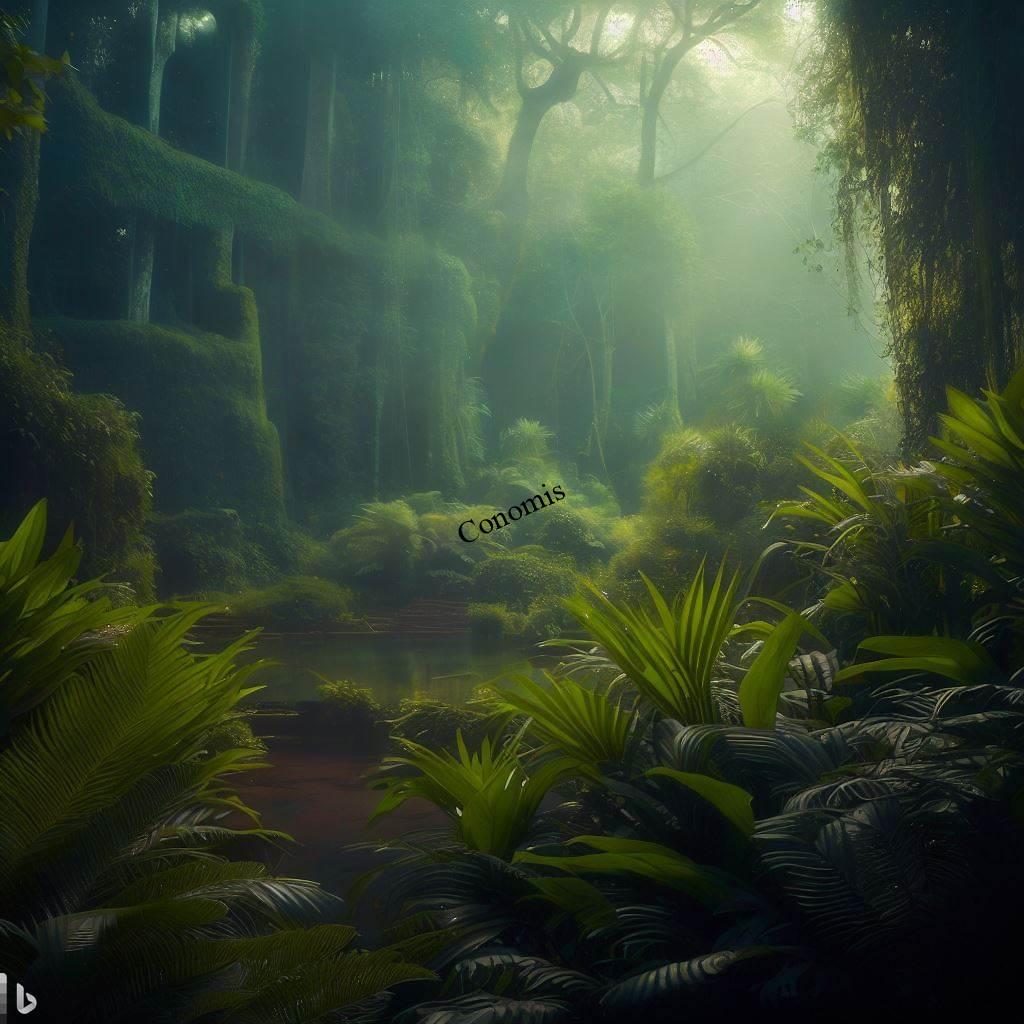Table of Contents
Introduction
Have you ever paused in your hectic life to observe the wonders around you? With its mesmerizing beauty and complexity, nature has captured the human imagination for millennia. From the gentle whispers of the wind dancing through the foliage to the vast, expansive oceans that remain largely unexplored, our environment is rich with tales and mysteries.
Every element in nature weaves its narrative. Please take a moment to listen to the leaves rustling, a soft lullaby of the trees sharing their ancient secrets. Simple yet profound sounds have been a source of solace and reflection for countless generations.

And then there are the oceans, those immense bodies of water covering most of our planet. Their depths hide wonders we’ve yet to discover, each wave and tide representing the heartbeat of the Earth. Not to forget the towering mountains, standing tall and majestic. They have watched civilizations rise and fall, remaining steadfast and magnificent.
Every aspect of our world, sound, sight, and sensation, is a chapter in the grand narrative of existence. And as we go about our daily lives, it’s worth remembering that we are not just observers but also participants in this captivating story of nature.
Study of Nature
Exploring our natural environment, commonly called ‘natural science,’ is an intricate journey that spans multiple scales and dimensions. This scientific field is not limited by size or distance; instead, it embraces everything from the tiniest organisms to the vast expanse of the cosmos.
At one end of the spectrum, we delve into microscopic organisms. These minute beings, often invisible to the naked eye, play a pivotal role in maintaining the balance of our ecosystems. Though seemingly small, their existence has massive implications for larger life forms and the environment.

In stark contrast to these microorganisms, the study of nature also ventures into the endless expanse of space, aiming to decode the mysteries of galaxies far beyond our reach. These vast celestial bodies, with their stars, planets, and nebulae, challenge our understanding and push the boundaries of our knowledge.
Central to natural science is the quest to grasp the essential mechanics of our universe. It’s a study that bridges the gap between the infinitesimal and the infinite, offering insights into the fundamental processes governing our existence and the vast cosmos surrounding us.
Nature’s Passive Reality
What does it mean?
Nature’s passive reality is a concept that captures the essence of the world in its purest form. It represents the untouched, pristine state of the environment, existing without the influence or alterations brought about by human actions.

When we speak of this passive reality, we’re referring to a landscape where nature operates on its terms. This vision of nature is raw and unmediated, showcasing the world in its most genuine and authentic state.
How humans perceive it
Amid our fast-paced lives, nature often fades into the background, serving merely as a scenic canvas against the relentless hustle of human existence. We move forward, ever so engrossed in our daily routines, treating the wonders of the natural world as mere spectacles or momentary diversions.
But to perceive nature solely as a passive backdrop is to miss the symphony of life; it orchestrates every moment. Please take a moment to listen: The birds don’t merely chirp; they sing songs of territories, mating, and the joys of life. Their distinct and purposeful melodies narrate stories of survival, courtship, and seasons.

Similarly, rivers flow more than just aimlessly. They carve paths, create habitats, and nurture life along their banks. Their constant motion is a dance of energy, a force that shapes landscapes and sustains countless species. Every ripple, every surge has meaning, a rhythm set by the intricate balance of the ecosystem.
In reality, nature isn’t just a static entity in the backdrop. It’s a dynamic, living force pulsating with rhythms and cycles. Recognizing and appreciating this can deepen our understanding and enhance our connection with the world around us.
Charles Darwin’s Concept for Nature
Evolutionary principles
Evolutionary principles form the cornerstone of our comprehension of life and its vast diversity on Earth. These principles, grounded in the ever-unfolding patterns of change and adaptation, provide insights into the intricate dance of existence over millennia.
Charles Darwin’s groundbreaking natural selection theory is at the heart of these evolutionary tenets. This revolutionary concept was more than just an idea; it was a seismic shift in how we understood the progression of life. No longer were species seen as static or unchanging entities; instead, they were dynamic, adapting and changing in response to their environment.

Darwin posited that over countless generations, species change, with those best suited to their environment thriving and reproducing. This process, often encapsulated in the phrase “survival of the fittest,” doesn’t necessarily refer to physical strength. Instead, “fit” in this context means an organism’s ability to survive, reproduce, and pass on its genes to the next generation.
In essence, Darwin’s theory offered a lens through which the tapestry of life could be understood, with each species representing a thread shaped and colored by the forces of natural selection. It was a bold assertion, challenging pre-existing beliefs and laying the foundation for modern biology.
Impacts on current understanding
In today’s scientific landscape, the impacts of Darwin’s evolutionary principles are profound and far-reaching. His theories have not merely added to the compendium of biological knowledge; they have fundamentally transformed it, serving as the foundation upon which modern biology is constructed.
Darwin’s insights into natural selection and the gradual adaptation of species over time have provided the tools to understand the intricacies of life on a granular level. It’s not just about acknowledging that species change over time; it’s about recognizing the myriad of ways these changes interplay with environmental factors, resulting in the vast diversity of life we see today.

This realization has humbled us. In the grand evolutionary timeline, humans are but recent entrants. While we may have achieved technological and societal advancements, biologically speaking, we are just one of countless species, each with its unique evolutionary journey. We are woven into the same vast tapestry of life, bound by the same laws of natural selection and adaptation.
Darwin’s concepts have imbued us with a deeper appreciation of life and our place within it. While we may play a dominant role on our planet currently, we are reminded of our origins, our interconnectedness, and the ancient processes that have shaped every living organism.
Geology and Wildlife
Geology and wildlife are intrinsically intertwined, each influencing the other in a dynamic dance of existence that has been ongoing for millennia. The physical features of our planet, crafted by geological forces, play a pivotal role in determining the vast array of habitats and, consequently, the diversity of life that populates them.
Take, for instance, the majestic mountains that pierce the skies. These towering behemoths, formed through tectonic movements and volcanic activities, create unique ecosystems at various altitudes. The flora and fauna found at the base differ significantly from those at higher elevations, with each altitude zone offering its fantastic set of challenges and opportunities for life.

Then, there are the deep valleys and gorges carved over time by the relentless flow of rivers. These regions often shelter diverse microenvironments, with the valley floors offering rich soils and moisture, making them ideal for certain species of plants and animals. The sheltered nature of these valleys can also create pockets where unique species evolve, isolated from external influences.
In essence, the geology of our planet acts as a sculptor, crafting myriad habitats that cater to diverse life forms. Each rock formation and terrain type contributes to the planet’s incredible biodiversity, serving as a testament to the intricate relationship between the Earth’s structure and the life it supports.
Human Intervention: Benefits and pitfalls
Human intervention in the natural world is a double-edged sword, carrying commendable achievements and consequential pitfalls with it. As a species, we have showcased an unparalleled ability to harness resources, innovate, and build civilizations that are marvels of engineering and culture. Yet, this progress often comes at a cost to the environment.
On one hand, human ingenuity has led to advancements that benefit both our species and others. We’ve created habitats, conserved endangered species, and developed sustainable agricultural practices that increase food yield without excessively depleting the soil. Through research and technology, we’ve developed ways to harness renewable energy, reducing our reliance on fossil fuels.

However, the other side of the coin could be more flattering. Our voracious appetite for resources has led to over-exploitation, stripping the Earth of its valuable assets. Forests have been razed for urban development, affecting the flora and fauna they housed. Oceans bear the brunt of pollution, with marine life struggling amidst plastic waste and oil spills. While propelling economic growth, our industrial endeavors have also pumped vast amounts of pollutants into the atmosphere, contributing to climate change.
In summary, while humans have undoubtedly achieved remarkable feats, it’s essential to tread with caution. The adverse effects of our intervention are clear and pressing, urging us to find a balance between progress and preservation.
Natural vs Supernatural: The balance of belief
The world we inhabit is governed by a set of discernible rules and patterns—laws of nature that dictate everything from the falling of an apple to the complex interactions within ecosystems. This tangible and measurable realm forms the bedrock of our scientific understanding. Yet, beyond this lies another domain that eludes empirical measurement but holds immense sway over the human psyche—the supernatural.
In all its magnificence, nature is a vast tapestry of interwoven phenomena. Everything follows a rhythm, from the predictable cycles of seasons to the intricate balance within food chains. This rhythm, decipherable through scientific inquiry, provides a framework for understanding life and the universe.

On the other hand, the supernatural delves into the mysteries that seem to transcend the boundaries of the natural world. It encompasses beliefs in deities, spirits, and other entities outside natural laws’ confines. For many, these beliefs form the foundation of their spirituality, offering solace, purpose, and a connection to something greater.
While nature and the supernatural might appear contrasting, they coexist harmoniously within the human experience. Both play pivotal roles, with nature grounding us in reality and the supernatural elevating our spirits, guiding our values, and shaping our perceptions of the unknown.
Earth and Nature
Floating in the boundless expanse of the cosmos, Earth appears as a minuscule blue dot, a seemingly insignificant speck against the backdrop of infinite space. Yet, this modest planet, our home, is a crucible of life, a testament to the miracles of nature that flourish against all odds.
The Earth, with its diverse landscapes—from the icy poles to scorching deserts, from lush forests to vast oceans—serves as the canvas upon which nature paints its masterpiece. Every inch of this planet, visible to the naked eye or hidden in its deepest crevices, pulsates with life. Creatures big and small, plants that reach for the sky, and those that thrive beneath the soil all form the intricate web of ceaselessly vibrant and evolving life.

Nature is not just a component of Earth; it is its very essence. It’s the force that breathes life into every nook and cranny, ensuring that life finds a way even in the most inhospitable environments. From the microscopic organisms in volcanic vents to the majestic whales cruising the oceans, nature’s tenacity and diversity are unparalleled.
In essence, while Earth is a tiny fragment in the vast universe, its richness lies in the boundless wonders of nature that it cradles, nurturing and sustaining life in its myriad forms.
Nature and the Atmosphere: Climate and Weather
When we gaze up at the sky, we’re met with an ever-changing tableau:
The bright blaze of the sun
The tranquil drift of clouds
The relentless cascade of rain
But beyond these visible spectacles, our atmosphere is engaged in an intricate ballet that shapes our planet’s very conditions of existence—governing our climate and daily weather patterns.
The atmosphere, that delicate blanket of gases enveloping Earth, acts as both protector and regulator. It shields us from the sun’s harmful radiation yet captures enough warmth to sustain life. This delicate balance defines our planet’s climate, the long-term patterns of temperature and precipitation that dictate the ecosystems and habitats we see around us.

Conversely, weather is the atmosphere’s daily mood—a more transient phenomenon. One day, it might be the gentle kiss of sunlight on a summer morning; the next, the roaring thunder of a storm. These short-term atmospheric conditions, while fleeting, have a profound impact on our daily lives, from determining our attire to affecting agricultural yields.
In summation, the relationship between nature and the atmosphere is symbiotic. The atmosphere dictates the rhythm of life on Earth, influencing both the overarching climate and the day-to-day weather, thereby shaping the narrative of life in its embrace.
Nature and Ecosystem
How ecosystems maintain balance
Ecosystems, the intricate tapestries woven by nature, are marvels of balance and harmony. Every living organism, from the tiniest microbe to the largest mammal, has a unique role in this grand orchestra, each contributing to sustaining life’s delicate equilibrium.
At the heart of an ecosystem is the concept of interdependence. No organism exists in isolation. Plants, for example, rely on the sun for photosynthesis, turning sunlight into energy. Herbivores, in turn, depend on these plants for sustenance. Predators, at the top of the food chain, keep herbivore populations in check, ensuring vegetation is not overgrazed. This interconnected web ensures that resources are utilized efficiently and sustainably.

Predators and prey, often seen as adversaries, are, truthfully, pillars of balance. Their dynamic relationship, driven by the principle of survival, keeps population numbers stable. Overpopulation of prey could lead to overconsumption of vegetation, while an abundance of predators could decimate prey populations. In its wisdom, nature ensures that both sides keep each other in check.
In essence, an ecosystem is a testament to nature’s genius. It’s an automated system where every entity, big or small, plays its part. With each participant performing their role, this intricate dance of life guarantees that the life cycle flows seamlessly, preserving the harmony nature fervently upholds.
Nature and Life
Life, in all its varied forms and complexities, is a testament to nature’s ingenuity. Regardless of its size or lifespan, each organism forms a crucial piece in the vast jigsaw puzzle that is our planet’s biosphere. The intricacy of this puzzle is awe-inspiring, with every life form intricately interconnected in a web of relationships that ensure the equilibrium of our world.
Consider the tiniest microbes, often unseen by the naked eye. While they might seem insignificant, they play monumental roles, from aiding digestion in larger organisms to recycling essential elements in various biogeochemical cycles. Their silent, often unnoticed work underpins the very foundation of life.

Then, shift your gaze to the majestic giants of the oceans, the whales. Beyond their sheer size and magnificence, they are vital for the marine ecosystem’s health. Their feeding habits help in nutrient distribution, and even their waste plays a role in nourishing phytoplankton, the microscopic plants that produce a significant portion of the world’s oxygen.
Every creature, no matter how big or small, holds a unique place in nature’s grand design. They collectively contribute to the delicate balance of our planet, ensuring that life, in its myriad forms and colors, continues to flourish. The dance of life celebrates nature’s unparalleled diversity and interconnectedness.
Nature and Conservation
Importance of conservation
Conservation isn’t a mere altruistic endeavor but an imperative for our survival. The narrative often gravitates towards saving endangered species or protecting pristine landscapes when discussing conservation. While these are undeniably crucial aspects, the scope and significance of conservation go far beyond.
At its core, conservation is about safeguarding the intricate balance of nature that has been fine-tuned over millions of years. Each species, habitat, and ecosystem plays a role in this vast, interconnected web. The extinction of a single species or the degradation of one habitat can set off a chain reaction, disrupting this balance and, in turn, impacting other species and habitats, including those upon which humans directly rely.

Furthermore, nature provides us with invaluable services, often taken for granted. Forests purify the air we breathe, wetlands filter our water, and bees pollinate the crops that provide our food. By conserving nature, we’re not just saving ‘them’; we’re saving ‘us.’ It’s a proactive investment in our future, ensuring that resources remain available for generations.
In conclusion, conservation is not a choice but a necessity. To ensure a sustainable and prosperous future for ourselves and the countless species we share on this planet, we must prioritize the health and balance of our natural world. It’s not just about preserving nature but about ensuring our future thrives.
Current initiatives
In the face of growing environmental challenges, numerous initiatives are being undertaken globally to safeguard our planet’s precious biodiversity. These endeavors, both large and small, collectively signify a rising awareness and commitment to ensure that the tapestry of life remains vibrant and diverse.
One of the most notable efforts is the establishment of national parks. These protected areas serve as green oases where flora and fauna can thrive away from the direct threats of urbanization, logging, and agriculture. They act as conservation epicenters, preserving ecosystems and offering a sanctuary for endangered species. Moreover, they play an educational role, allowing visitors to connect with nature and understand its intrinsic value.

Wildlife sanctuaries are another pivotal initiative in the conservation landscape. Unlike national parks, which may cater to a broader spectrum of activities, sanctuaries primarily focus on protecting specific wildlife. They offer a refuge for species on the brink of extinction, ensuring they have a safe habitat to reproduce and increase their numbers.
These initiatives, among others, indicate a global momentum towards conservation. They represent a collective pledge to shoulder the responsibility of stewardship, ensuring that the wonders of our natural world are preserved for future generations to cherish and enjoy.
Human Interrelationship with Nature
The bond between humans and nature is ancient, profound, and inextricable. Since the dawn of our species, we’ve been shaped by the natural world and, in return, have made our indelible marks upon it. This dynamic relationship is embedded in the fabric of our existence, influencing our biological makeup and cultural narratives.
Every breath we inhale is a testament to this connection. The oxygen that fills our lungs is produced by countless trees and plants, which depend on the carbon dioxide we exhale, creating a harmonious cycle of interdependence. This symbiotic relationship extends beyond the air; it envelops every aspect of our lives. The food that nourishes us, whether the fruits plucked from trees or the grains harvested from vast fields, underscores our reliance on the Earth’s bounty.

Yet, this relationship goes beyond mere physical sustenance. Nature also feeds our souls. The tranquility of a forest, the rhythm of ocean waves, or the vastness of a desert landscape can evoke profound emotions, reminding us of our place in the larger tapestry of life.
In conclusion, our interrelationship with nature is not just a matter of survival but of identity. We are, at our core, children of nature. Recognizing and honoring this bond is crucial, not just for our planet’s well-being but for humanity’s very essence.
Nature Review: Past, Present, and Future
The nature narrative has been a tale of ebb and flow, displaying its formidable resilience and alarming fragility over the epochs. By delving into the annals of history, we get a glimpse of how our relationship with nature has transformed, and it offers insights into the potential trajectory we’re headed toward.
In the distant past, humans lived in harmony with nature. Nomadic tribes roamed vast landscapes, foraging and hunting, with the Earth’s rhythms dictating their way of life. There was a deep reverence for nature, and many ancient civilizations crafted myths and legends that celebrated the land, skies, and seas. It was a time of coexistence, where nature was seen as a provider and protector.

Fast forward to the present, and the dynamics have shifted dramatically. With industrialization, urbanization, and technological advancements, humans have begun to exert unprecedented pressure on natural ecosystems. Forests are dwindling, species are facing extinction, and the air we breathe and water we drink are threatened. Nature’s resilience is being tested, and the emphasis now is on survival and conservation.
As we ponder the future, we’re faced with a poignant question: Will we revert to a harmonious coexistence or continue on a path that might compromise the very essence of our natural world? Our choices today will carve out tomorrow’s narrative, and we must choose wisely.
Nature and the Climate Crisis
The symphony of nature has always played a serene tune, but recent changes have introduced alarming crescendos that are impossible to ignore. The once predictable patterns of our planet are shifting, and the culprits are clear: human-induced factors leading to the climate crisis.
Across the globe, signs of this crisis are palpable. Glaciers, the ancient sentinels of our polar regions, are receding at unprecedented rates. These colossal ice masses, which have stood the test of time, are now melting, causing sea levels to rise. Coastal cities and island nations are feeling the brunt, with many facing existential threats from encroaching waters. Such a scenario isn’t a dystopian projection—it’s happening in real time.

But it’s not just the seas and ice that sound the alarm. Heatwaves are becoming more frequent and severe, forest fires are ravaging vast landscapes, and biodiversity is dwindling. Extreme weather events, once deemed rare, are now becoming the norm.
The term “climate crisis” isn’t mere sensationalism. It encapsulates the gravity of the situation we find ourselves in. And while nature is resilient, it’s also sending clear signals that immediate action is imperative. The onus is on us, the custodians of this planet, to heed these warnings and forge a path toward a sustainable and balanced coexistence with nature.
Nature and Technological Enhancement
The intertwining of nature and technology paints a complex picture, juxtaposing innovation with conservation. Technology’s ceaseless march forward has been a double-edged sword for our natural world. On one hand, it has been the harbinger of many challenges; on the other, it promises potential solutions.
Historically, rapid technological advancements have come at a cost. Industrialization, for instance, paved the way for modern comforts but also introduced pollutants into our air and water. Deforestation accelerated with the invention of heavy machinery, and our oceans became littered with the byproducts of our consumerist societies. Indeed, some of today’s most pressing environmental challenges can be traced back to technological progress that didn’t adequately consider ecological consequences.

Yet, as we stand at the dawn of new technological eras — from artificial intelligence to biotechnology — there’s a glimmer of hope. Innovators and conservationists alike are harnessing these advancements to benefit the planet. Drones monitor deforestation in real-time, machine learning algorithms aiding wildlife conservation, and biotechnologies are being explored to rejuvenate damaged ecosystems.
As we teeter on the precipice of further technological revolutions, the fundamental question arises: Can we strike a balance, leveraging technology not as an antagonist to nature but as a partner in restoring and preserving its delicate equilibrium? The future hinges on our ability to harmonize innovation with conservation.
Conclusion
In the vast tapestry of life, nature emerges not merely as picturesque landscapes or distant wildernesses but as the foundation upon which we stand, breathe, and thrive. Its significance transcends aesthetic pleasure and ventures into sustenance, spirituality, and survival.
While the splendor of a crimson sunset or the serenity of a forest might captivate our senses, nature’s true essence lies in its intricate systems that support life in its myriad forms. Every drop of water we drink, every morsel of food we consume, and every breath of air we inhale is a testament to nature’s boundless generosity. Yet, it is not an inexhaustible resource but a fragile balance of interdependent elements.

Our relationship with nature has always been dynamic, marked by reverence, exploration, exploitation, and, more recently, a realization of its vulnerability. As we stand at this critical juncture, our choices will determine our planet’s future narrative. The ball is in our court, and the roles we choose to play are pivotal.
In conclusion, nature beckons us with a silent plea and a profound question: As we stride forward in our journey, will we tread as compassionate stewards, safeguarding its treasures, or will we emerge as agents of irreversible change, jeopardizing the very essence of life? The legacy we leave behind hinges on our answer.
FAQs
What did Charles Darwin contribute to our understanding of nature?
Charles Darwin introduced the concept of natural selection, highlighting the evolutionary principles guiding nature.
How does human intervention impact nature?
Human activities can destroy habitat, pollution, and overexploitation, severely impacting nature’s balance.
Why is nature conservation crucial?
Conservation ensures the survival of diverse species and maintains ecological balance, which is crucial for human survival.
What’s the difference between climate and weather?
Weather is short-term atmospheric conditions, while climate is the long-term average.
How can technology benefit nature?
Technology can aid in conservation efforts, pollution control, and studying various natural phenomena.
You Can Also Read

https://www.nature.com/articles/d41586-023-02740-0
https://www.nationalgeographic.com/science/article/earth
Conomis Thoughts
![]() Copyright 2023 CONOMIS
Copyright 2023 CONOMIS
